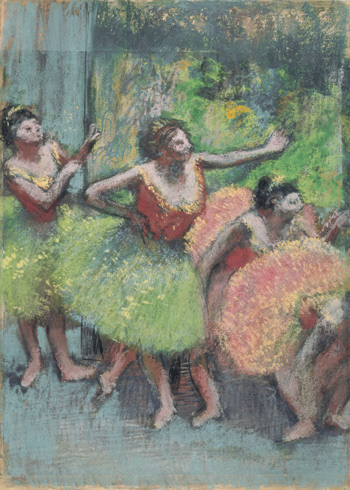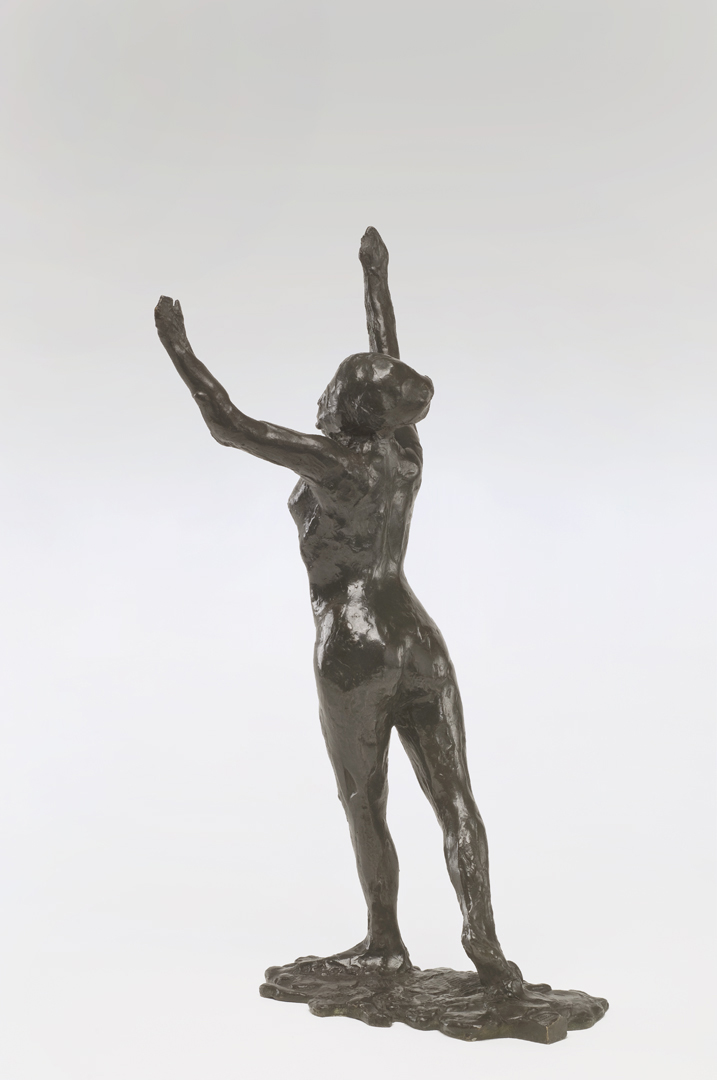Choreographer Christopher Wheeldon describes what the dancers in the wings are up to in Degas’s Dancers in Green and Yellow on the exhibition audio tour.

Edgar Degas, Dancers in Green and Yellow, c. 1903. Pastel and charcoal on several pieces of tracing paper, mounted on board. Solomon R. Guggenheim Museum, New York, Thannhauser Collection, Gift of Justin K. Thannhauser, 1978
Well, this is a very familiar, very, very familiar pose to me and has been captured and I was thinking about this the other day. There’s a Royal Ballet poster, from when I was in the company, which means it must have been in the early ’90s, of a very similar composition of ballerinas in the wing, in costumes for I think La Bayadère, watching what’s going on onstage. And often what happens is, I think my story here would be that, one of their fellow corps de ballet members has been given the opportunity to dance their first solo variation on stage and there would be great, there’s always great excitement and a great deal of support amongst the young dancers for their colleagues. So perhaps, you know, perhaps that’s what’s going on here, that they’ve all rushed from their warming up positions on the side of the stage, to take a quick peak to see how she does, some probably with support in mind, and others hoping that she’s going to roll her ankle and mess it all up so that they get the chance themselves.
Christopher Wheeldon, choreographer

